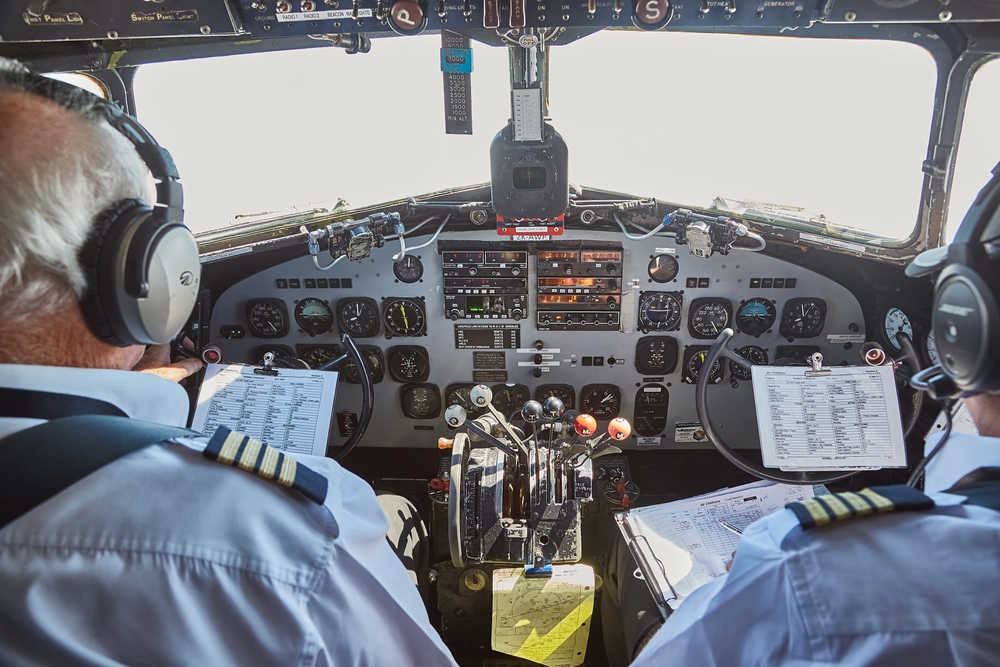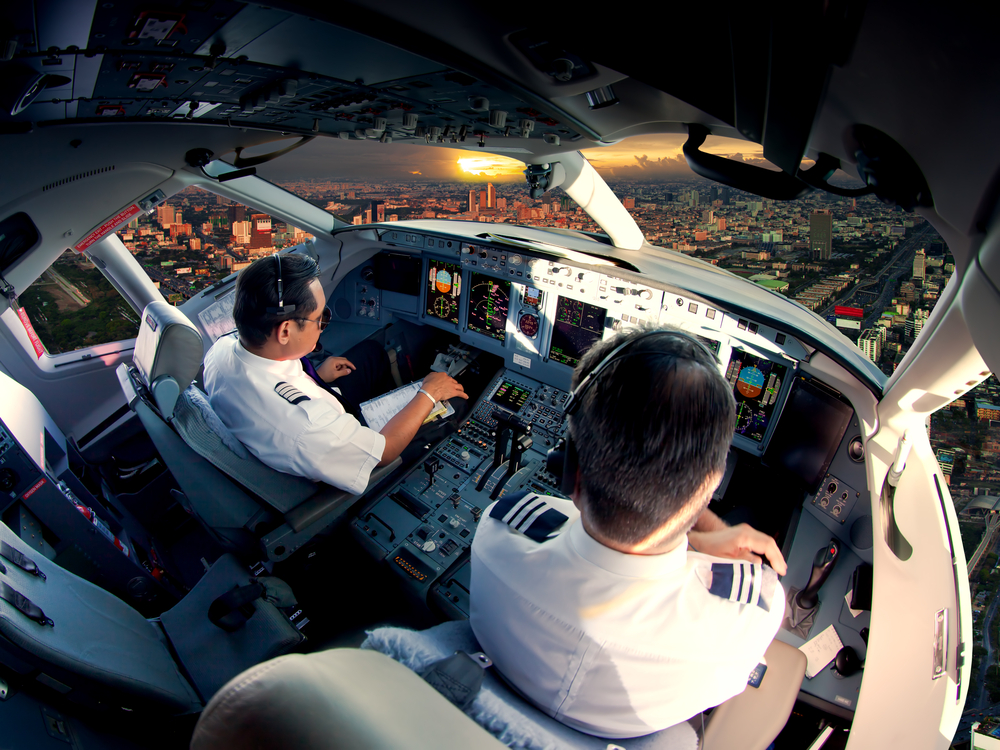The aviation industry has never been short of challenges, yet it continues to grow. As fleets expand and older pilots retire, the demand for qualified flight crew is becoming one of the industry’s most pressing concerns. So, how many pilots will airlines actually need in the years to come? And what does that mean for those dreaming of the cockpit? Today, we will take a closer look at what is driving pilot demand and what the major forecasts say about the next 20 years. If you are an aspiring pilot or just keeping an eye on where the industry is heading, the numbers tell an important story.
Table of Contents
What is pushing pilot demand upward
The pilot shortage is real, and it is not going away anytime soon. If you tried applying for airline jobs in late 2024 or early 2025, you may have noticed hiring slowed down a bit, but that was expected. Airlines had been racing to fill seats after the pandemic, so what we are seeing now is more of a market correction than a downturn.
The bigger picture has not changed. So, what is really going on with the pilot shortage? What is pushing pilot demand upward? Airlines worldwide are planning for long-term growth, with the commercial aircraft fleet expected to nearly double over the next 20 years. Carriers are actively ordering new planes and signing lease agreements, which means they will need many more pilots to keep all those flights operating smoothly.
At the same time, thousands of experienced pilots are approaching retirement, and there are not enough new aviators ready to fill their shoes. Boeing estimates that about two-thirds of future pilot demand will come from replacing this older generation. The industry is now heading toward a peak shortage. For instance, in the US alone, the greatest gap is expected around 2026, with an estimated shortfall of roughly 24,000 pilots. While regulators and airlines have tried to ease the pressure by extending pilot age limits internally, the growing gap in the workforce remains a serious challenge.
Meanwhile, regions like Asia, Latin America, and Africa are experiencing rapid growth in air travel, expanding their fleets and further increasing pilot demand. But there is a catch. The pipeline of new pilots is not keeping pace there. There simply are not enough flight instructors, training remains costly, and flight schools can only accommodate so many students. On top of that, many pilots are rethinking their careers due to lifestyle pressures, burnout, and salary concerns – issues that did not disappear after the pandemic-related crisis.
When you put it all together, it is clear why the need for aviators is rising and will continue to do so for years to come. That is why long-term forecasts consistently show strong demand ahead.

What does the pilot demand look like for the next 20 years
According to the latest industry reports, the pilot shortage will remain one of the aviation sector’s biggest challenges over the next 20 years, with no easy solution in sight. From what Boeing’s latest outlook tells us, there are currently around 315,000 active commercial pilots. Over the next 20 years, airlines will need approximately 660,000 new pilots to keep up with demand by 2044. However, the need for new pilots is not the same everywhere. It varies quite a lot by region, shaped by local growth. Now, let’s break this down.
North America
If you are focusing on North America, the demand for new pilots is both significant and consistent across major industry forecasts. For example, Boeing projects that over the next 20 years, about 119,000 new pilots will be needed here, driven mainly by fleet expansion and the retirement of experienced aviators. Airbus most recent forecast suggest a slightly lower number, with around 104,000 new pilots required by 2042. On the other hand, CAE forecasts an even greater need than Boeing, expecting roughly 129,000 new pilots in North America by 2034, contributing to a global demand of 267,000 pilots during the same period.
What this tells you is that, despite some differences in numbers, North America remains a vital hub with strong, ongoing opportunities for aspiring pilots as the aviation industry grows and seasoned aviators retire.
Latin America
Considering Latin America as your flight path? There is good news ahead. According to Boeing, the region will require approximately 37,000 new skilled pilots between 2025 and 2044, fueled by fleet modernization and a rising demand for air travel across the continent. Airbus reinforces this trajectory in its Global Market Forecast, projecting that Latin America’s aircraft fleet will nearly double by 2044. Such fleet expansion clearly signals a need for well over 30,000 pilots in the region within that timeframe.
Europe
For those already training or just planning to launch a pilot career in Europe, here is what the latest data tells us. Europe continues to be one of the world’s most active and complex aviation markets, and the demand for skilled pilots is steadily climbing. According to the US plane maker, the region will require approximately 147,000 to 149,000 new pilots over the next two decades. Similar to trends seen elsewhere, this rising demand is being driven by a combination of growing fleet sizes and the gradual retirement of seasoned pilots.
The range in this forecast reflects Boeing’s use of the term ‘Eurasia,’ which not only includes European countries but also extends to parts of Eastern Europe outside the EU, the Caucasus region (such as Georgia, Armenia, and Azerbaijan), Central Asia (including Kazakhstan and Uzbekistan), and Russia.
Africa
The pilot demand picture in Africa is shaping up differently compared to other regions. Boeing projects that roughly 23,000 new pilots will be needed between 2025 and 2044 to support the continent’s growing aviation industry.
Middle East
If you are looking at the Middle East specifically, the pilot demand is both significant and strategic. Boeing projects that by 2044, around 67,000 new pilots will be needed to support this expansion, driven by both rapid fleet growth and the strategic role the region plays in connecting Europe, Asia, and Africa. Airbus supports this outlook, forecasting that the commercial aircraft fleet in the Middle East will grow by nearly 80%. Key airlines like Emirates, Qatar Airways, and Saudia continue to scale up, and they will need a steady stream of well-trained, qualified pilots to fly their expanding fleets.
Northeast Asia
When we talk about Northeast Asia, which includes the well-established markets of Japan, South Korea, and Taiwan, we are looking at a region that, while not leading in sheer numbers, holds a vital role globally. Boeing says that around 23,000 aviators will be needed in this region over the next two decades.
Southeast Asia
Driven largely by a booming tourism industry and a strong focus on enhancing intra-regional connectivity, Southeast Asia is about to require nearly three times as many new pilots as Northeast Asia. As countries like Indonesia, Thailand, Vietnam, and Singapore continue investing in aviation infrastructure and expanding both low-cost and full-service airlines, the region’s skies are becoming busier than ever. According to Boeing, this growth will turn into a demand for 62,000 pilots.
IATA aligns with this view, noting that the Asia-Pacific region will lead global air traffic growth. Passenger demand is expected to rise by 9% annually in 2025, with Southeast Asia playing a central role in driving that surge.
South Asia
South Asia, which includes countries like India, Pakistan, Bangladesh, Sri Lanka, Nepal, Bhutan, and the Maldives, is experiencing strong economic growth. With ongoing improvements in infrastructure and a growing middle class, it is estimated that the region will require around 45,000 new flight crew to support the increasing number of passengers. Compared to Southeast Asia’s rapid expansion and Northeast Asia’s steady demand, South Asia offers a balanced yet promising environment for pilots.
Oceania
Oceania, covering Australia, New Zealand, Papua New Guinea, and the Pacific Islands, follows a similar pattern. Between 2025 and 2044, the region is expected to need approximately 11,000 pilots. What is escalating this demand is the steady growth of aircraft fleets and the need to keep remote parts of the region closely linked by air.
China
If you are aiming for a career in China’s skies, the numbers speak volumes. Around 124,000 new pilots will be needed to keep up with China’s remarkable growth. This market is not only the largest in Asia, but it is also one of the fastest expanding globally, with annual passenger traffic expected to grow at 5.9%, outpacing the global average of 4.7%.

The data shows that competition for experienced pilots will remain strong for quite some time, but the demand for new pilots is set to rise dramatically. So, if you are starting your training today, you are actually in a great position to take full advantage of the opportunities that will open up once you graduate. Keep in mind that the industry expands, flight training schedules may become busier and more competitive because more pilots will be entering the workforce. Airlines are constantly updating their fleets, which means many pilots will need additional training to qualify for new aircraft types or adapt to changes in aircraft systems.

